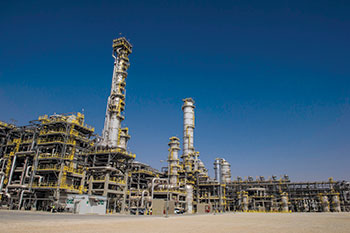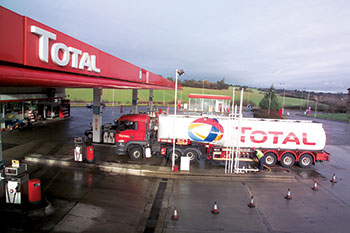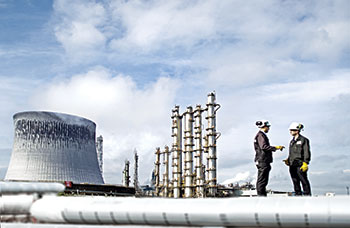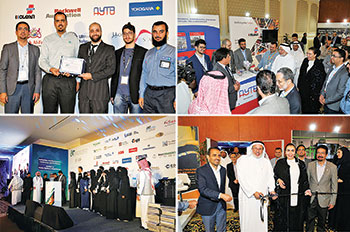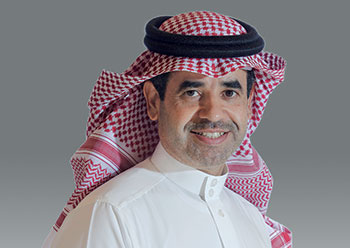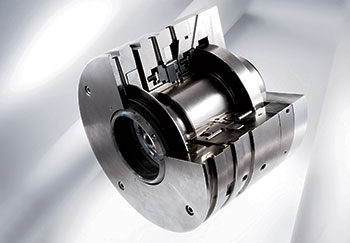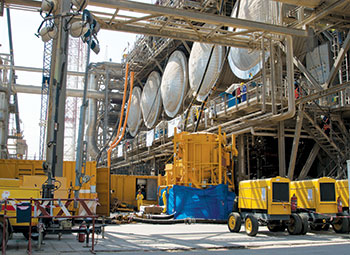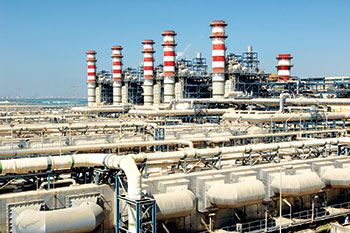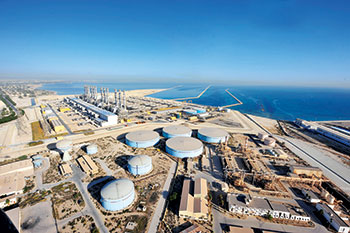
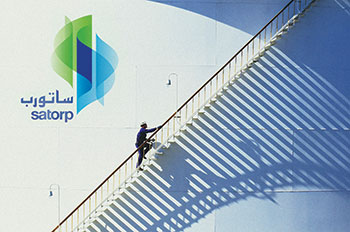 Satorp ... setting up a petrochemical complex
Satorp ... setting up a petrochemical complex
Most of the chemical plants recently built and under construction worldwide are based on conventional design and construction but processes could change
As Chemical companies continue to build new plants, global investment in the chemical industry increased by nearly a factor of three and currently stands at more than $200 billion between 2005 and 2015.
Most of the chemical plants recently built and under construction worldwide are based on conventional design and construction, but the engineering departments at chemical companies and EPC contractors are about to make major changes to the engineering process.
Growth creates a size imperative. The Sadara mega-project, which was completed in Jubail in Saudi Arabia in the autumn of 2017, marks an additional milestone in the global chemical boom. By making a $20 billion investment, the project partners Saudi Aramco and Dow Chemicals have positioned themselves to exploit the increasing demand for chemicals. According to market research estimates, the annual increase in demand for chemical products over the next 20 years will be in the 4 per cent-4.5 per cent range.
In response, chemical companies continue to invest, and to some extent, the size of the investments is also increasing. The oil company Saudi Aramco, in partnership with the plastics manufacturer Sabic, intends to build an oil-to-chemical complex in the next few years, at a cost of $20 billion.
Together with the French energy company Total, the Saudi industry leader is planning to spend $5 billion on construction of an ethylene-propylene plant. Adnoc, the Abu Dhabi state oil company, has announced plans to increase its petrochemical production capacity by a factor of three to 11.4 million metric tonnes by the year 2025.
However, the launch of spectacular projects is not limited to the Middle East. The shale gas boom in the US has generated demand for new petrochemical projects. Four new ethane crackers were completed in 2017 alone. Four additional crackers are currently under construction and scheduled to begin operating in 2019.
 |
Evonik .. taking a critical look |
A second wave of investment is already under way. The feasibility of building five more crackers is currently being assessed. The American Chemical Council estimates that annual capital spending by US chemical companies will increase from $40 billion in 2016 to $58.6 billion in 2021. In February, the Council listed 294 current projects with a total value of $179 billion.
Capital expenditure on production expansion and new plants and equipment increased in the European chemical industry as well last year. According to estimates published by the European chemical trade association Cefic, capital spending in the global chemical industry increased more than threefold between 2005 and 2015.Excluding the Middle East for which no data is available, capital spending in the chemical-producing countries rose to $210 billion in 2015. Capital spending by German chemical producers was roughly $19.8 billion in 2017.
Raw material demand to support existing and new production capacity produces a follow-on effect. Further investment will be needed in the oil and gas sector. The International Energy Agency (IEA) estimates that by 2040, petrochemicals will replace the fuel sector as the main force driving global demand for crude oil. Daily demand in the chemical industry will reach 15.7 million barrels, 47 per cent higher than in 2015.
That is basically good news for the chemical plant construction industry. However, structural change in the industry has been under way for several years. As projects continue to increase in size, greater risk has to be accepted. In addition, investors and plant operators prefer to do business with global partners who take total responsibility for everything from feasibility studies to commissioning, and often the financing as well. European plant construction companies, and German firms in particular, are now too small to take on that role.
For several years, German companies have been lamenting the increased competitive pressure. A current study carried out by the German Engineering Federation VDMA indicates that competition will become even more tougher in world markets. EPCs based in China, Western Europe and the US are regarded as major competitors in the market for large projects. Depending on the technology and area of specialisation, companies have felt the effects of lower oil prices as customers cancelled, or delayed capital spending projects.
Restrictive financing conditions and a reluctance to offer alternative financing services are often the reason why German companies fail to acquire EPC projects. A current study by the consultants PWC reveals just how important this factor can be. Customers ask for project financing in one out of every four requests for quotation.
Despite increased capital spending in the chemical industry, the trend towards larger-scale plants reduces the number of medium-scale projects. As a result, German EPCs are looking not only for ways to differentiate themselves, but also for new business models. For example, the engineering companies want to attract customers with their technology and by adding operational services to their portfolios. They are doing this in response to growing market demand. The engineering and services company Bilfinger estimates that by 2020 there will be more than 11,000 chemical and pharmaceutical plants in Europe, North America and the Middle East that are more than ten years old and will require modernisation. The service business provides an opportunity to increase turnover, and that is one factor which makes it attractive to EPCs.
In addition, the presence of a local service organisation provides an operating base which can be used by a local sales team to acquire new projects and for other activities in the regions. There is an ongoing trend towards increased local content in construction projects. This includes equipment procurement, often based on a best cost country sourcing strategy, as well as local recruitment for project work such as installation and project management. Local content is often a requirement imposed by customers. This is frequently the case in Asia and the Middle East where companies are state-owned, and it is used as a means for stimulating the local economy.
Besides services, EPCs have identified digitalisation as a possible differentiator to help ward off the competition. In a current study on opportunities for Industry 4.0 in the EPC market, VDMA reports that 72 per cent of EPCs see digital products and services as a means for generating additional turnover. Seamless, standardised interfaces in the trans-disciplinary engineering process are also seen as a way to improve efficiency.
The lack of seamless data architectures remains a problem in chemical plant engineering. The IT landscape is heavily diversified, and interface management requires an enormous amount of effort. Process flows also very significantly from company to company. This makes collaboration more difficult, and it is harder to create the standards which are essential for effective digitalisation.
EPCs such as Thyssenkrupp Industrial Solutions realise that engineers spend 40 per cent of their time at installation sites looking for material and documents. Data inconsistency and changes cause 20 per cent of cost overruns and delays. The engineering companies want to exploit these opportunities and use digitalisation to create new business models. One approach is to analyse existing databases.
The technology company Linde has set up a dedicated digitalisation team. Its role is to work with experts from the business units on development of digital products. One of the first projects is a new service portal for plant operators which greatly simplifies the spare parts procurement process. P&ID details are stored in the Linde databases, and that information is used initially to create an electronic marketplace for spare parts. In the future, data flows will be used to predict faults and generate maintenance plans on the service portal.
However, the speed at which these developments are being driven in the digital world creates the need for a new approach to project management. The traditional methodology was to define and describe all of the project goals in detail. In contrast, digitalisation projects get under way before all of the functionality of the product has been specified. Project management needs a significant degree of agility. Established project management methodologies, which provide that capability such as ‘scrum’, could supplement the tools used in engineering for project management.
Evonik is a case in point which shows the advantages of taking a critical look at the established approach to project execution. The new project execution methodology helped the company to reduce capital spending by 15 per cent on plant construction projects. The difference is as follows.
Traditionally, the emphasis in project management has been on the execution phase. With the new approach, project definition takes place at an earlier stage, and greater attention is paid to the project risks. The scope of the project is based on the minimal business needs and not on the optional enhancements.










































































